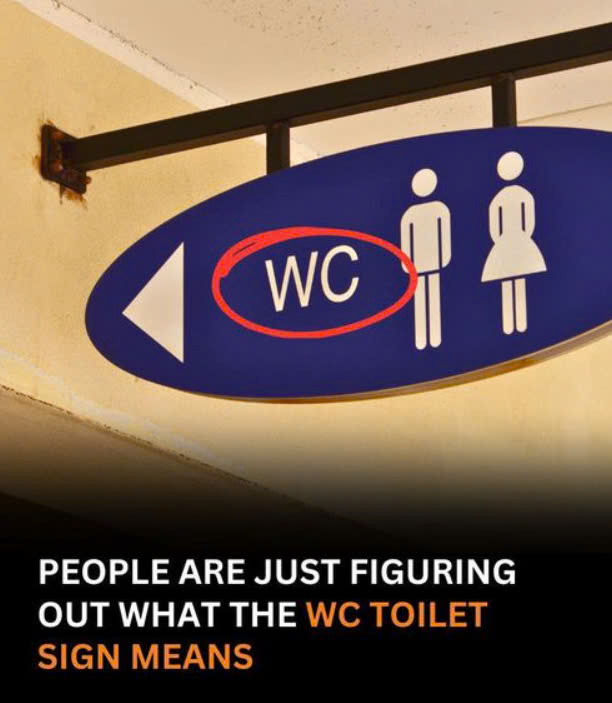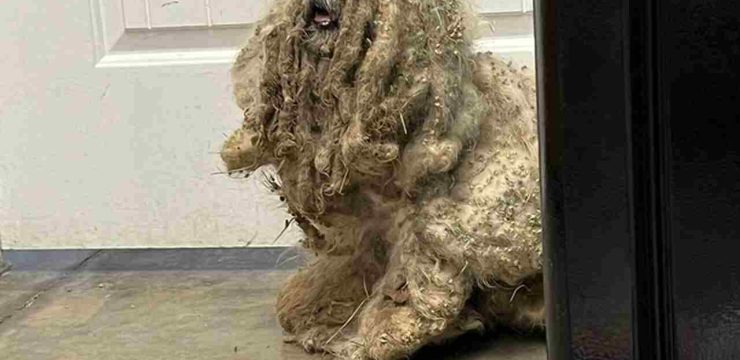Many people have seen the letters “WC” on restroom doors, but not everyone knows what they actually stand for. If you’re among those who have never really given it much thought, you’re not alone. It turns out, a lot of people are only now discovering the true meaning behind this common abbreviation.

In the United States, we use many different terms for a public restroom. Whether we call it the bathroom, the restroom, the lavatory, or even, as some like to say, “the throne,” we’ve got plenty of words to choose from. But that small “WC” sign? It’s a bit of a mystery for most Americans. However, that confusion is starting to fade, thanks to the ever-reliable internet, which always seems to come through with unexpected information.
The internet has given us answers to so many odd questions, like the hidden functions of shopping cart hooks or the meaning behind the initials in “M&M’s.” It seems that the web is a never-ending source of fascinating facts. Now, the mystery of the “WC” sign has also been revealed, sparking a new wave of interest and surprise.
Recently, there was a revelation about the meaning of “WC,” and it left many people confused and intrigued. As one person commented online, “I’m so glad someone finally asked about this. I’ve been wondering for years but never took the time to look it up.” Another person said, “I’ve had a ‘WC’ sign in my own house for ages, and I never bothered to find out what it meant!” Yet another added, “I was 23 years old before I finally learned what ‘WC’ stood for.”
Of course, there are always those who are surprised that not everyone knows the answer. One commenter wrote, “How could anyone not know what this means?” while another person insisted, “I thought it was common knowledge!”
So, what exactly does “WC” mean? The answer is much simpler than you might expect. “WC” stands for “water closet.” The term dates back to the early days of indoor plumbing, a time when having running water in your home was a big deal. When indoor plumbing first became available, many people converted small closets into spaces where they could install toilets. These closets became one of the few rooms in the house with access to running water, which made them quite special at the time.
Nowadays, we typically refer to these spaces as bathrooms, but originally, bathrooms didn’t include toilets at all. They were literally rooms for bathing, and the toilet was often located in a completely separate room. In older houses, it wasn’t unusual to find a bathtub in one room and a toilet in another, completely detached from each other.
A popular TikToker, @itsnathannyc, explained in a video, “Before indoor plumbing, the bathroom was only for the bathtub. People used to fetch water from outside, heat it, and pour it into the tub. When plumbing finally became a thing, they already had the bathroom, so the toilet went into a closet – it was just the most convenient place to put it.” This video has since been deleted, but the explanation has helped many understand why toilets were often placed in small closets during this time.
These little closets equipped with toilets eventually became known as “water closets,” and the term “WC” was born. This was back in the early 1900s, when it was common to place toilets in spare closets or cupboards. Over the years, the term stuck, and even though “water closets” are a thing of the past, the abbreviation “WC” is still used today.
So, the next time you come across a “WC” sign, you’ll know exactly what it means and why it has stuck around all these years. It may seem like an outdated phrase, but it’s one that still holds a place in modern public spaces.





